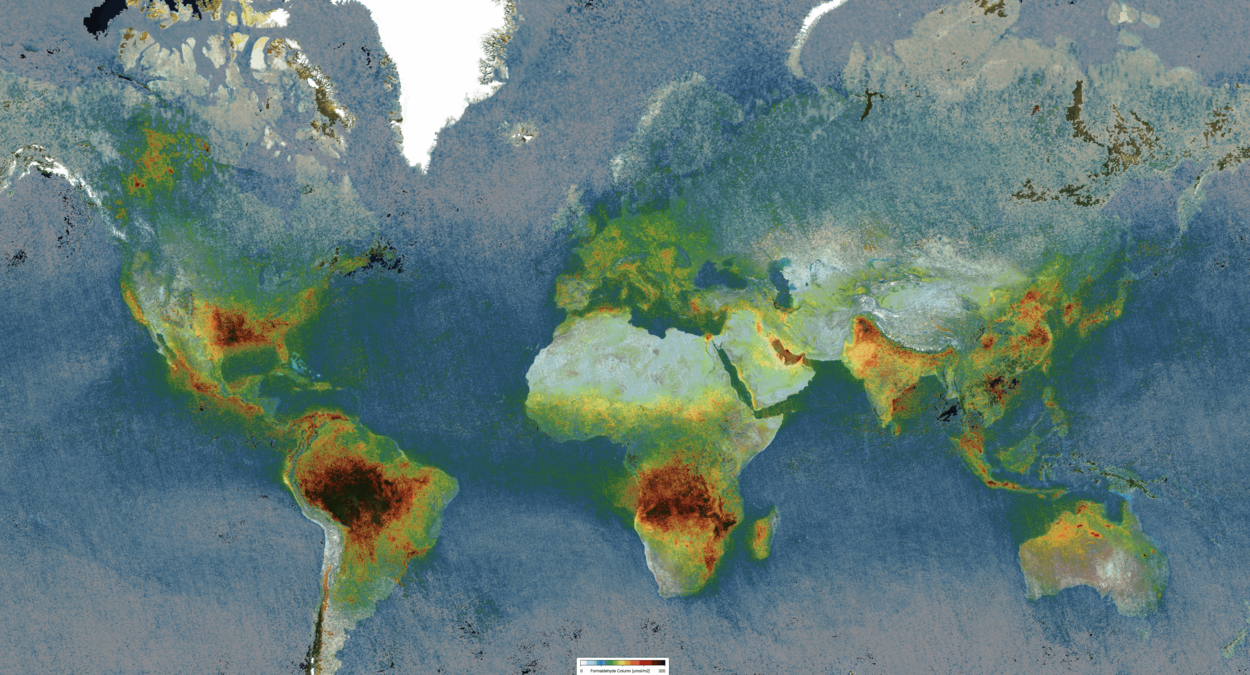TROPOMI Formaldehyde (HCHO)
Long term satellite observations of tropospheric formaldehyde (HCHO) are essential to support air quality and chemistry-climate related studies from the regional to the global scale. Formaldehyde is an intermediate gas in almost all oxidation chains of non-methane volatile organic compounds (NMVOC), leading eventually to CO2. Non-Methane Volatile Organic Compounds (NMVOCs) are, together with NOx, CO and CH4, among the most important precursors of tropospheric O3. The major HCHO source in the remote atmosphere is CH4 oxidation. Over the continents, the oxidation of higher NMVOCs emitted from vegetation, fires, traffic and industrial sources results in important and localized enhancements of the HCHO levels. The seasonal and inter-annual variations of the formaldehyde distribution are principally related to temperature changes and fire events, but also to changes in anthropogenic activities. Its lifetime being of the order of a few hours, HCHO concentrations in the boundary layer can be directly related to the release of short-lived hydrocarbons, which mostly cannot be observed directly from space. The excellent signal-to-noise ratio of TROPOMI yields stunning images of HCHO. The global map above shows HCHO concentrations created with TROPOMI L2 data averaged over the period March through May 2022.
